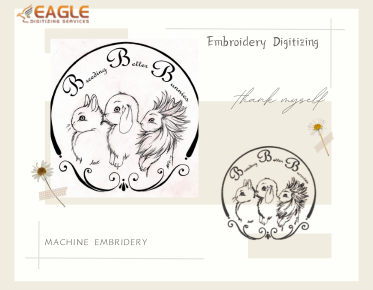2025's Embroidery and Digitizing Trends: What You Need to Know
As we step into 2025, the world of embroidery and digitizing is poised for exciting transformations. With advancements in technology and shifts in consumer preferences, the embroidery industry is set to embrace new trends that will redefine how designs are created and executed. This article explores the key trends that are expected to shape the embroidery and digitizing landscape in 2025.
Embracing Sustainability in Embroidery
Sustainability is no longer just a buzzword; it is a crucial consideration for businesses across industries. In embroidery, sustainable practices are gaining traction as consumers become more environmentally conscious. Companies are exploring eco-friendly materials and processes to reduce their carbon footprint. This trend is expected to continue, with more businesses adopting sustainable embroidery practices to meet consumer demand.
Advancements in Embroidery Digitizing Technology
The embroidery digitizing process is becoming increasingly sophisticated, thanks to technological advancements. Modern embroidery digitizing software offers enhanced precision and efficiency, allowing for more intricate and detailed designs. As technology continues to evolve, we can expect even more innovative features that will streamline the digitizing process and improve the quality of embroidery designs.
Customization and Personalization
Customization and personalization are key trends that are driving the embroidery industry forward. Consumers are seeking unique and personalized products, and embroidery offers a perfect solution. From personalized apparel to custom home décor, the demand for customized embroidery is on the rise. Businesses are leveraging this trend by offering a wide range of customization options to cater to individual preferences.
The Rise of 3D Embroidery
3D embroidery is gaining popularity as it adds depth and dimension to designs, making them more visually appealing. This technique involves using foam to create a raised effect, giving the embroidery a three-dimensional look. As more businesses and consumers discover the aesthetic appeal of 3D embroidery, its adoption is expected to increase significantly in 2025.
Integration of AI and Machine Learning
Artificial intelligence (AI) and machine learning are revolutionizing various industries, and embroidery is no exception. These technologies are being integrated into embroidery digitizing software to enhance design accuracy and efficiency. AI-powered tools can analyze designs and suggest improvements, while machine learning algorithms can optimize stitch patterns for better results. This integration is set to transform the embroidery digitizing process, making it more efficient and precise.
Exploring New Markets and Applications
As the embroidery industry evolves, businesses are exploring new markets and applications for their products. From fashion and home décor to automotive and promotional products, embroidery is finding its way into diverse sectors. This trend is expected to continue as businesses seek to expand their reach and tap into new opportunities.
Services Offered by Eagle Digitizing
Eagle Digitizing is a leading provider of embroidery digitizing services, known for its high-quality and efficient solutions. With over 25 years of experience, Eagle Digitizing offers a range of services, including 3D PUFF Digitizing, left chest digitizing, and cap logo digitizing. The company is committed to delivering precise and detailed designs, ensuring customer satisfaction with every project.
Future Prospects in Embroidery and Digitizing
Looking ahead, the future of embroidery and digitizing is bright, with numerous opportunities for growth and innovation. As technology continues to advance, we can expect even more sophisticated tools and techniques that will enhance the quality and efficiency of embroidery designs. Businesses that embrace these trends and adapt to changing consumer preferences will be well-positioned to thrive in the evolving embroidery landscape.
As we move forward, it will be interesting to see how these trends unfold and shape the future of embroidery and digitizing. Will sustainability become a standard practice across the industry? How will AI and machine learning further revolutionize the digitizing process? These are just a few of the questions that will drive the industry forward in the coming years.
.png)


